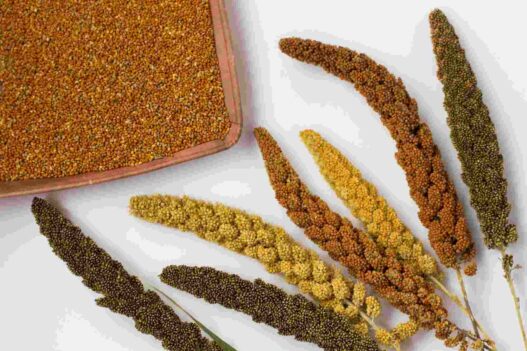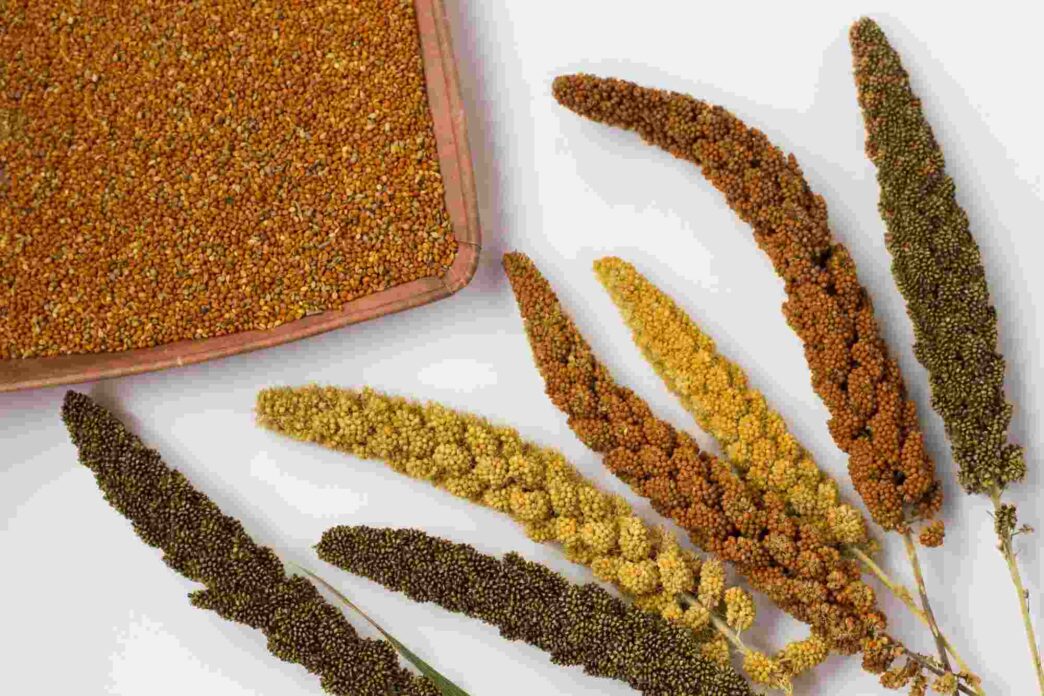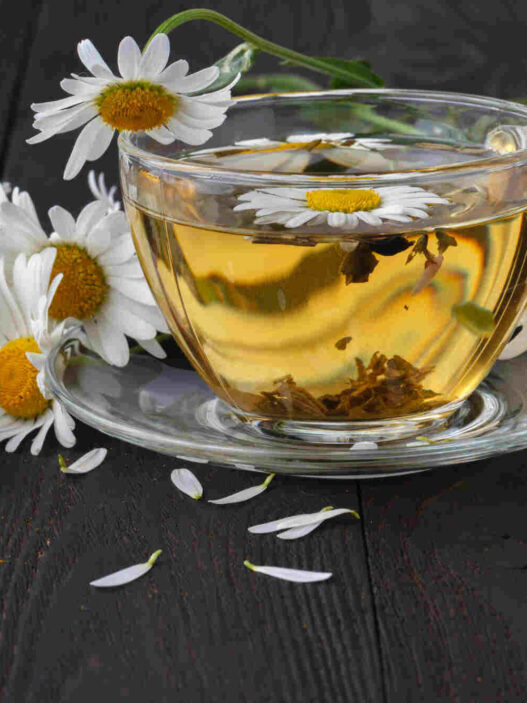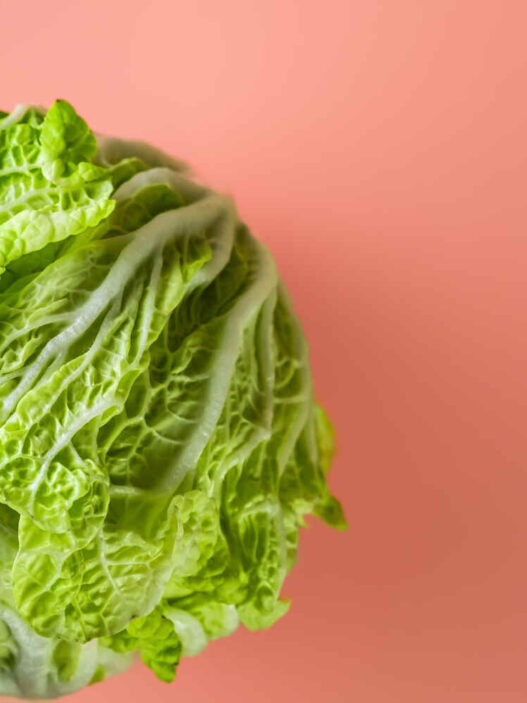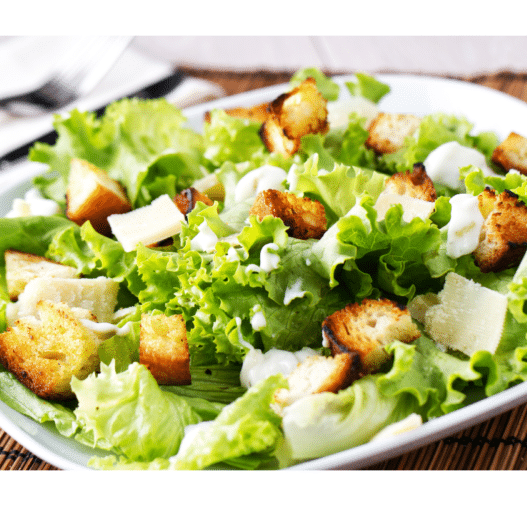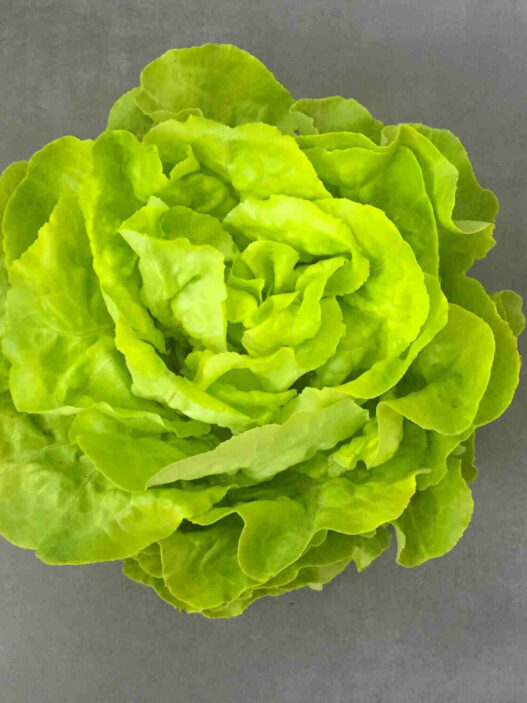Wheat flour, a widely used staple food and an important source of carbohydrates is deficient in some essential amino acids and some other nutrients. In the last few years, a lot of concerns regarding wheat have emerged mainly since wheat products have been linked with increasing cases of type 2 diabetes and obesity and because wheat contains gluten, a protein that can be harmful to those with gluten-intolerance, celiac disease, or non-celiac gluten sensitivity. Millet flour or grains are a nutritious and versatile gluten-free alternative to traditional wheat flour. There are several types of Millet – Pearl millet flour (Bajra), Finger millet flour (Ragi), Foxtail millet flour, and Proso millet flour. Let us see why these types of millet flour are becoming increasingly popular among health-conscious people, gym goers, fitness freaks, or people on a diet. Millet flour is rich in essential nutrients and has several health benefits. Do check them below.
What is Millet?
Millet, also called Nutri-cereals or Minor grains, is a group of small-seeded grains that have been cultivated for thousands of years and have been a staple food in many cultures (1). Millet flour is made from a group of small-seeded grasses that are grown throughout the world, including Africa, Asia, and India. It is one of the oldest cultivated crops. Millet is relatively easy to grow and is a drought-resistant crop, making it an important food source in regions with limited water resources. It is also a sustainable crop, as it requires fewer resources to grow than other grains like wheat or corn.
Is Millet Gluten-free?
Yes, millet is a gluten-free grain, which means that it is a great alternative to wheat and other gluten-containing grains for those with celiac disease or gluten intolerance. It is also easy to digest and may help to reduce inflammation in the body. In addition to its nutritional and culinary benefits, millet has also been used in traditional medicine for its various health benefits. It has been used to improve digestion, reduce inflammation, and even lower blood sugar levels.
Millet Flour Nutrition
Millet grains or flour are a rich source of essential nutrients, including dietary fiber, protein, B vitamins, calcium, magnesium, iron, and non-gluten proteins called Kafirins. It is also low in fat and contains no cholesterol, making it an ideal food for individuals looking to maintain a healthy weight and diet.
Millet is highly nutritious and is a good source of protein, fiber, and essential minerals, such as magnesium, phosphorus, and potassium. It is also low in fat and calories, making it a great option for those looking to manage their weight or improve their overall health.
Types of Millet
There are several types of millet, including pearl millet, foxtail millet, finger millet, and proso millet, among others.
Pearl Millet (Pennisetum glaucum) and Finger Millet (Eleusine coracana) are the two major millet types (2).
Pearl Millet (Bajra)
Pearl Millet is considered the 6th highest-producing crop after maize, wheat, rice, barley, and sorghum. It was a traditional crop in Western Africa and in Asia including India (popularly known as Bajra), and Pakistan. Pearl Millet was considered the grain of the poor and hence was not popular despite its value. Nutrition-wise, it contains higher energy than rice or wheat and is an important source of B vitamins such as thiamine (vitamin B1), riboflavin (vitamin B2), and niacin (vitamin B3). Pearl millet is also a good source of vitamin E and vitamin A. Additionally, it contains important minerals like calcium, iron, and phosphorus mainly but also magnesium, manganese, zinc, and copper. Further, its high fiber content (8-9%) helps in bowel movement, keeps you full for a longer time, aids in weight loss, and prevents obesity.
Finger Millet (Ragi)
This is again a neglected crop despite its value. The main characteristic feature of finger millet is that the protein found in it is superior and contains essential amino acids beneficial for health. Also, finger millet is rich in calcium content. It is used and grown in India and Nepal and is popularly termed as Ragi in India. The plant carries finger-like spikes at the top of stem, hence called Finger millet.
Foxtail Millet (Kangani)
Foxtail Millet is from the seeds of an annual grass plant (Setaria italica) and possesses several health benefits due to its high protein content with several essential amino acids. It mainly contains setarins which is 60% of the total protein content (3). Foxtail millet-based products were demonstrated to contain higher protein, dietary fibre, and resistant starch, and had a lower glycemic index than wheat, rice, or barley. They are categorized as foods with a medium glycemic index, suitable for diabetics. Because of the high calcium content in Foxtail millet, some benefit of osteoporosis has also been reported (4). China is the largest producer of Foxtail millet but is also grown in Africa, Asia and some part of Europe.
Proso Millet (Cheena)
Proso Millet (5) is a highly nutritious cereal grain obtained from warm-season grass (Panicum miliaceum). It can tolerate a wide range of temperatures. Interestingly, this is not cultivated in Africa or Asia as other millets but cultivated in the United States, Russia, and some South American countries for livestock feed. Proso millet is deficient in lysine.
There are other types of Millet too. These are:
Sorghum (Jowar),
Kodo Millet (Kodo),
Barnyard Millet (Sawa/Sanwa/ Jhangora),
Little Millet (Kutki),
Buckwheat (Kuttu),
Ameranthus (Chaulai).
The last two types are Pseudo Millets.
Why Millet Flour (Pearl, Foxtail, Finger, or Proso) is an Excellent Choice?
Here are the qualities of Millet Flour that make it an excellent nutritious alternative (6):
1. Energy and Protein
Millets are highly nutritious, and a major source of energy and protein as compared to other common and popular cereals such as wheat, rice, maize, etc. They are a good source of essential amino acids (methionine, cysteine), except lysine and threonine.
2. Vitamins and Minerals
Millet contains B complex vitamins, vitamin B6, niacin, folic acid, and minerals such as high calcium, iron, potassium, magnesium, phosphorus, zinc, etc.
3. Gluten-free
Good for people who are gluten-intolerant or are suffering from celiac disease or non-celiac gluten insensitivity.
4. Good Source of Fibre
Millets are easy to digest. Millet seed coat contains various substances such as cellulose, hemicellulose, and pectin that do not get broken down by digestive enzymes, and therefore, millet is a good source of dietary fiber.
5. Nervous System Health
Millets contain lecithin which helps support nervous system health.
6. Higher Fat Content
Millets have higher fat content than rice, maize, and sorghum.
7. Rich Source of Magnesium
Proso and other millets are a good source of magnesium. Magnesium helps in regulating glucose and insulin levels thereby reducing the risk of type 2 diabetes.
8. Good Source of Phosphorus
A single cup of cooked Millet provides about 24% of the body’s daily requirements of phosphorus. Phosphorus is an important mineral that helps in forming a mineral matrix of bone. Phosphorus also is an important constituent of nucleic acids, the building blocks of DNA.
9. Low Glycemic Index
Millet Flour has a 36% lower glycemic index (52.7) compared to wheat (74.2) (7) hence it can be used by patients suffering from diabetes and other metabolic disorders.
Health Benefits of Millet Flour
Many studies have revealed that regular intake of millet products, whether Pearl millet, Foxtail millet, Finger millet, or Proso millet, is associated with various health benefits such as anti-inflammatory, antioxidative, hypoglycaemic, and cholesterol-lowering properties. Millet flour has several health benefits, including:
1. Gluten-free
Millet flour is a great option for individuals with celiac disease or gluten intolerance, as it is naturally gluten-free. Millets, therefore, help reduce the irritation caused in celiac disease by other grains that contain gluten. Gluten is a protein found in many grains, including wheat, barley, and rye, but not in millet.
2. Lowers Cholesterol
The high fiber content in millet flour has been shown to help reduce cholesterol levels in the body, which can lower the risk of heart disease (8). The phytic acid present in finger millet also helps lower cholesterol.
3. Supports Digestive Health
Millet flour is a good dietary fiber source, promoting healthy digestion and preventing constipation. Millet is considered a potential prebiotic and probiotic. The fibre present in millet flour help prevent constipation, colon, cancer, and obesity.
4. Regulates Blood Sugar
Millet flour has a low glycaemic index, meaning it is slowly digested and absorbed, resulting in a more gradual rise in blood sugar levels. People who consumed pearl millet reported a lesser incidence of diabetes (9). The flavonoids present in finger millet inhibit α-glucosidase and α-amylase enzymes thereby reducing blood sugar. A systematic review and meta-analysis revealed that long-term millet use could reduce fasting and post-prandial blood sugar and HbA1c levels and hence millet can help manage and reduce the risk of developing diabetes (10).
5. Prevent Gallstones
Pearl Millet prevents the secretion of bile acids which are responsible for causing gallstones.
6. Boosts Immune System, Antioxidant and Anti-inflammatory
Millet flour contains several essential vitamins and minerals that are important for immune system function, such as vitamin B6, zinc, and iron. It contains magnesium which helps fight diseases such as cancer. The polyphenols present in millet have antioxidant properties which also help boost the immune system.
7. Supports Bone Health
Millet not only contains calcium but also contains a large amount of phosphorus, which helps in bone growth and repair. Phosphorus is present in the mineral matrix of bone.
8. Faster Wound Healing
The ferulic acid present in finger millet prevents damage to the tissues and helps in the wound-healing process.
9. Anticancer Properties
Millets are high in fiber and antioxidants. Proso millets have shown anti-proliferative properties against breast cancer and liver cancer cells. Lignans and phytonutrients in millet act against cancer.
The Downsides of Millet – The Anti-Nutrients
Anti-nutrients are those substances present in both pearl and finger millet that reduce the bioavailability of nutritional factors such as minerals or limit the digestibility of protein and starch. These anti-nutrients include phytic acid, tannins, oxalates, and polyphenols. Thus, these anti-nutrients present in Pearl, Finger, Foxtail, or Proso millet may reduce the absorption of minerals.
Ways to Use Millet Flour in Your Diet
Millet flour is a versatile ingredient that can be used in a variety of recipes. It has a mild, slightly sweet flavor that works well in both sweet and savory dishes. Millet can be used in a wide range of recipes, from breakfast cereals and baked goods to savory dishes like pilafs and stews.
Here are some ways to use millet flour:
1. Baked Goods
Millet flour can be used in place of traditional wheat flour in baking recipes such as bread, muffins, and cookies.
2. Flat Breads
Millet flour can be used to make flatbreads such as roti and naan.
3. Thickener
Millet flour can be used as a thickener in soups and stews.
4. Coating
Millet flour can be used as a coating for chicken or fish.
5. Porridge
Millet flour can be used to make a creamy porridge by combining it with water or milk and sweetening it with honey or maple syrup.
When using millet flour in recipes, it is important to keep in mind that it does not have the same binding properties as wheat flour. This means that you may need to use additional binders, such as xanthan gum or guar gum, to help your baked goods hold together.
Conclusion
Millet flour, whether Pearl, Finger, Foxtail, or Proso Millet Flour is a nutritious and versatile gluten-free alternative to traditional wheat flour. It is rich in essential nutrients and has several health benefits, including promoting digestive health, regulating blood sugar levels, and boosting the immune system. For people with celiac disease or gluten intolerance, millet flour is a great alternative to wheat flour. Millet flour can be used in a wide range of recipes, from baked goods to savory dishes, and has a mild, nutty flavor that pairs well with many other ingredients.
Millet flour is also a nutritious choice. It is a good source of fiber, protein, and essential minerals, such as magnesium and phosphorus. It is also low in fat and calories, making it a great option for those looking to manage their weight or improve their overall health. Overall, millet flour is a versatile and nutritious ingredient that is a great option for those who need to avoid gluten or simply want to incorporate more whole grains into their diet. With its many health benefits and culinary uses, it is a great ingredient to add to your diet.
Sources
- https://www.ncbi.nlm.nih.gov/pmc/articles/PMC10149725/
- https://www.ncbi.nlm.nih.gov/pmc/articles/PMC8005370/
- https://pubmed.ncbi.nlm.nih.gov/32767555/
- https://www.ncbi.nlm.nih.gov/pmc/articles/PMC10149725/
- https://en.wikipedia.org/wiki/Proso_millet
- https://www.ncbi.nlm.nih.gov/pmc/articles/PMC5220228/
- https://pubmed.ncbi.nlm.nih.gov/34395493/
- https://www.ncbi.nlm.nih.gov/pmc/articles/PMC8005370/
- https://www.ncbi.nlm.nih.gov/pmc/articles/PMC8005370/
- https://pubmed.ncbi.nlm.nih.gov/34395493/.
